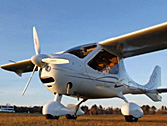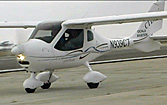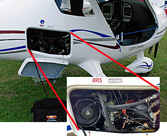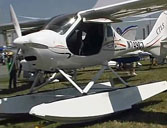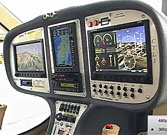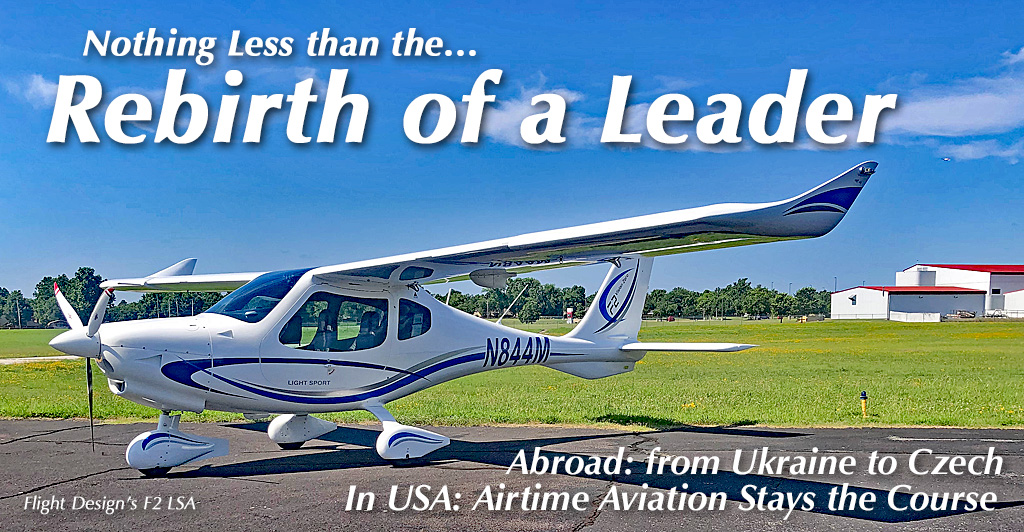
Web stats showed a strong response to my article about Ukraine-based light aircraft builders continuing on even as the missiles fly and the bombs fall around them. The situation is terrifying and the future uncertain but the stories we don’t hear sometimes involve courageous people in the recreational aircraft industry. In the middle of the last decade, long before Putin’s aggression, LSA market leader Flight Design went through a German-imposed reorganization. While difficult, the company emerged stronger and more stable. In development through this challenging time, Flight Design unveiled their new F-series, starting with their two-seat LSA F2 model at Aero Friedrichshafen 2019. They also displayed an F2e powered by electric motor. Those who examined these displays could readily see the spacious fuselage was built with a four seater in mind for the future. Things were progressing well… Then, WAR! Some experts believe ample signs existed that Russia might invade Ukraine yet to ordinary individuals busy living their own lives, hostilities seemed to erupt suddenly.


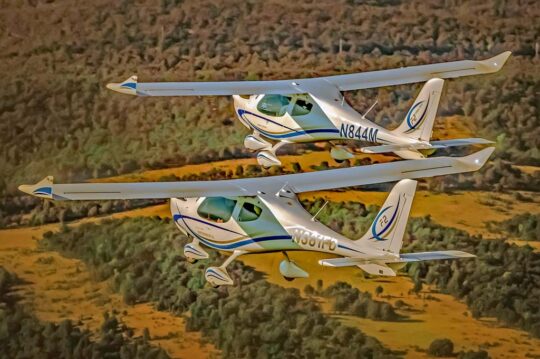 In the middle of the last decade, long before Putin's aggression, LSA market leader Flight Design went through a German-imposed reorganization. While difficult, the company emerged stronger and more stable.
In development through this challenging time, Flight Design unveiled their new F-series, starting with their two-seat LSA F2 model at Aero Friedrichshafen 2019. They also displayed an F2e powered by electric motor. Those who examined these displays could readily see the spacious fuselage was built with a four seater in mind for the future. Things were progressing well…
In the middle of the last decade, long before Putin's aggression, LSA market leader Flight Design went through a German-imposed reorganization. While difficult, the company emerged stronger and more stable.
In development through this challenging time, Flight Design unveiled their new F-series, starting with their two-seat LSA F2 model at Aero Friedrichshafen 2019. They also displayed an F2e powered by electric motor. Those who examined these displays could readily see the spacious fuselage was built with a four seater in mind for the future. Things were progressing well…
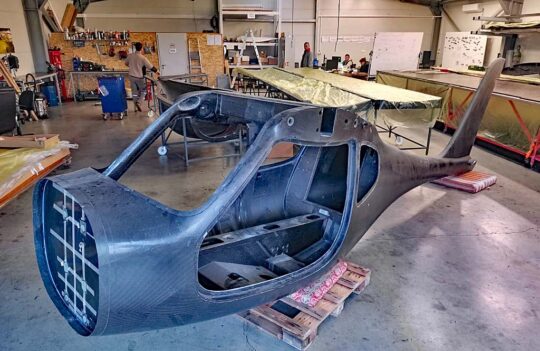
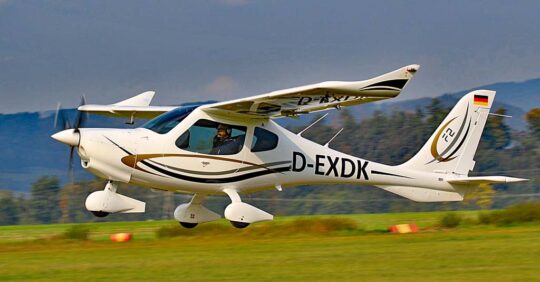 Despite such hardships, Flight Design's German leaders and team closed ranks and moved production to Šumperk, Czech Republic, near the country's northern border with Poland, about 100 miles east of Prague.
“[The company is using] a new, 25,000-square-foot site suitable for use as a production and paint shop,” reported longtime importer, Tom Peghiny in an article from AOPA. The company had been doing some development work in Czech and now expanded their footprint to take up manufacturing. This represented a huge effort under the most trying — and dangerous — of conditions.
The accompanying images show elements of the work to establish a new production facility. Since most molds and other tooling could not be removed from Kherson to Šumperk — about 1,000 miles to the west — the company had to acquire new production jigs and they had to do this while supply lines were pinched, shipping costs were sky-high, and interest rates were rising on funds needed to create a new manufacturing plant.
Despite such hardships, Flight Design's German leaders and team closed ranks and moved production to Šumperk, Czech Republic, near the country's northern border with Poland, about 100 miles east of Prague.
“[The company is using] a new, 25,000-square-foot site suitable for use as a production and paint shop,” reported longtime importer, Tom Peghiny in an article from AOPA. The company had been doing some development work in Czech and now expanded their footprint to take up manufacturing. This represented a huge effort under the most trying — and dangerous — of conditions.
The accompanying images show elements of the work to establish a new production facility. Since most molds and other tooling could not be removed from Kherson to Šumperk — about 1,000 miles to the west — the company had to acquire new production jigs and they had to do this while supply lines were pinched, shipping costs were sky-high, and interest rates were rising on funds needed to create a new manufacturing plant.
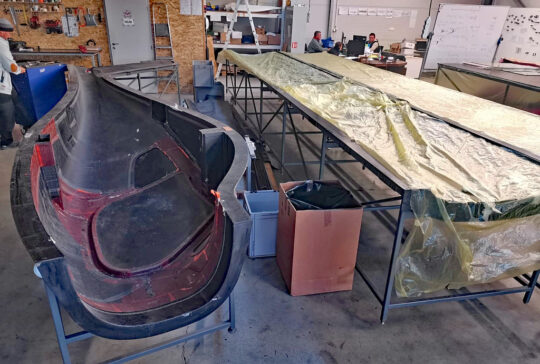
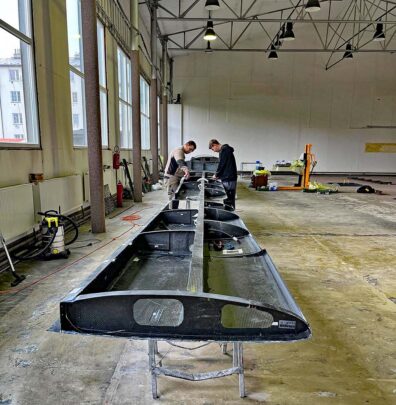
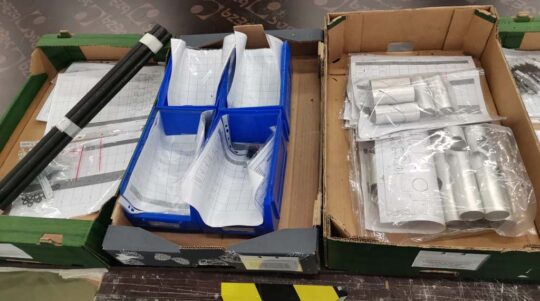
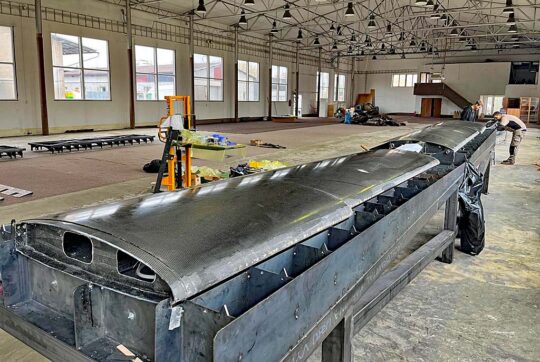
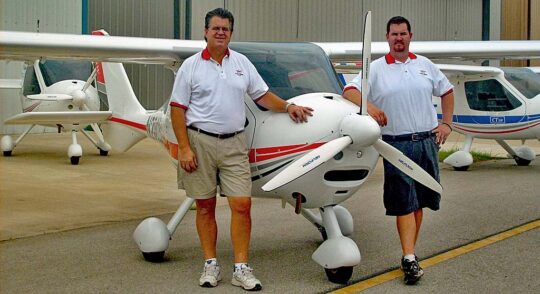
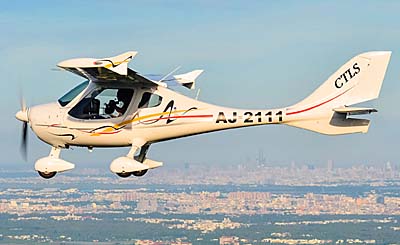 Yes, those of us in countries where private aviation is well-established take for granted the privilege of flying cross country. In fact, it’s one of the great joys we love to experience. It's a fantastic way to see the country. That’s simply doesn't happen in China. …Or, it didn't. Things are changing and one company has forged ahead despite the challenges.
This story involves a Taiwanese-origin, China-based company called AeroJones and involves the delivery of one of their CTLS aircraft to a customer. In the USA, this would never be news. In China, it most definitely is!
Yes, those of us in countries where private aviation is well-established take for granted the privilege of flying cross country. In fact, it’s one of the great joys we love to experience. It's a fantastic way to see the country. That’s simply doesn't happen in China. …Or, it didn't. Things are changing and one company has forged ahead despite the challenges.
This story involves a Taiwanese-origin, China-based company called AeroJones and involves the delivery of one of their CTLS aircraft to a customer. In the USA, this would never be news. In China, it most definitely is!
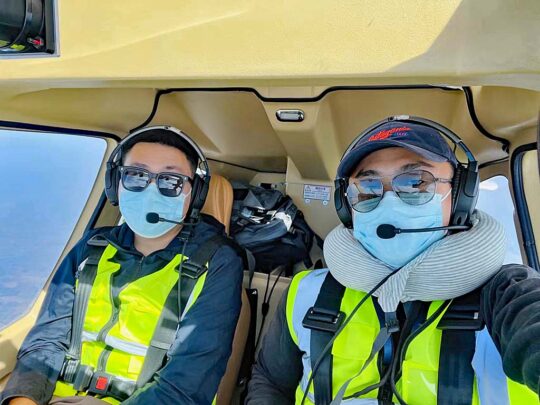
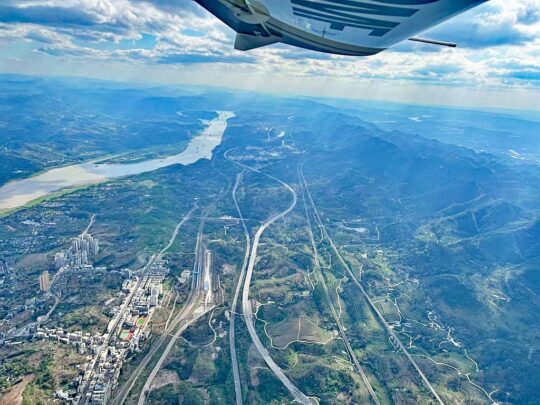

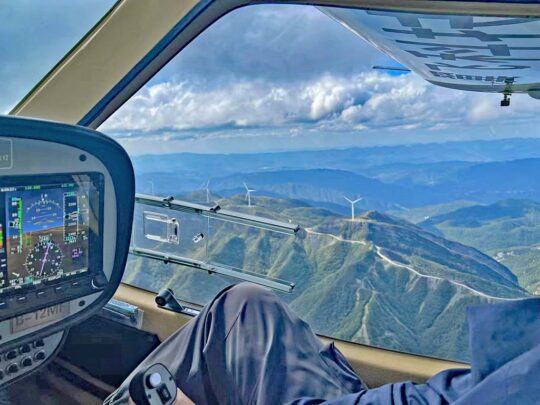
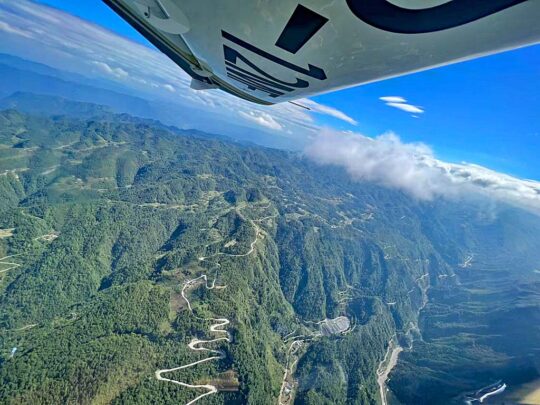
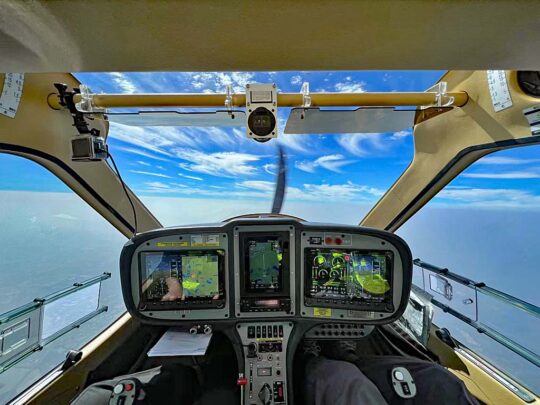
 This short video, although using a language few viewers may understand, offers glimpses of flying over China. From a Light-Sport Aircraft, these are very rare scenes. Aircraft other than military and airline simply don't get permission for cross country flights… but things are changing. Enjoy the views, compliments of AeroJones.
https://youtu.be/EzAFrDB_dHQ
This short video, although using a language few viewers may understand, offers glimpses of flying over China. From a Light-Sport Aircraft, these are very rare scenes. Aircraft other than military and airline simply don't get permission for cross country flights… but things are changing. Enjoy the views, compliments of AeroJones.
https://youtu.be/EzAFrDB_dHQ
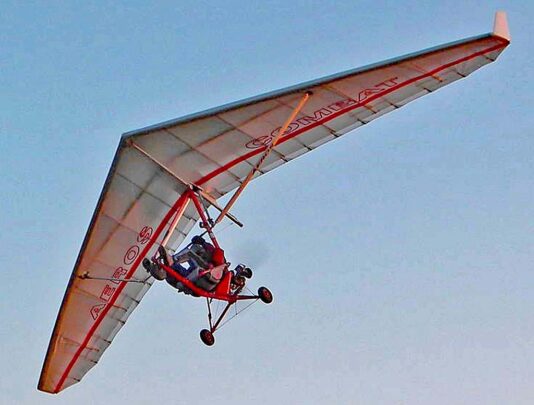
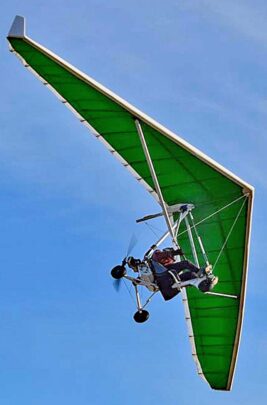 Still the Aeros team continues to build and deliver their flying machines, ranging from hang gliders to trikes to the Sky Ranger three-axis airplanes (
Still the Aeros team continues to build and deliver their flying machines, ranging from hang gliders to trikes to the Sky Ranger three-axis airplanes (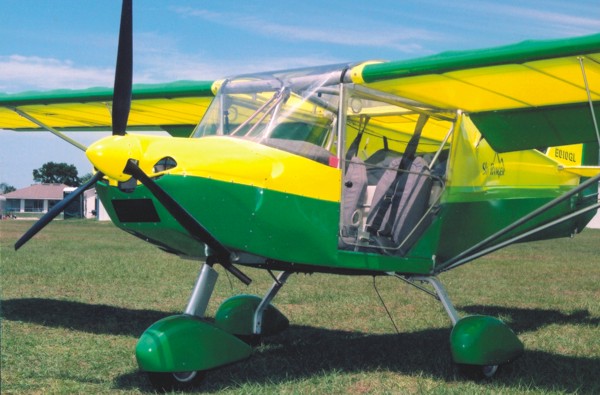
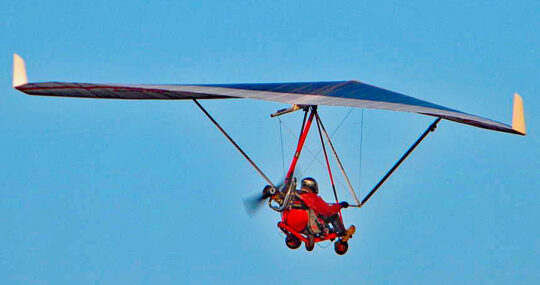
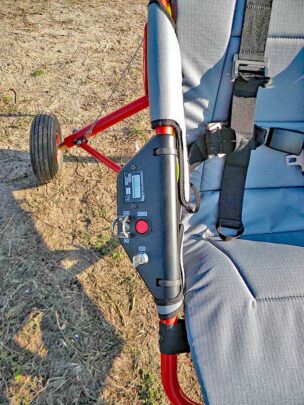 Fox T is another wing for nanolight trikes, created for "those who want to feel the simplicity and real pleasure of bird-like flying," said Aeros. Fox T offers low and slow maneuverable flying. "Fox T has been developed from our beginner Fox glider and has been reinforced and adapted exclusively for flying with nanolight trikes," Aeros clarified.
For experienced pilots wanting maximum performance, Aeros offers their Combat T, "a step higher in nanolight technology, designed for those who want to fly faster and farther."
Besides the Polini or Vittorazi two-stroke engines adapted from the powered paraglider industry, Aeros offers a
Fox T is another wing for nanolight trikes, created for "those who want to feel the simplicity and real pleasure of bird-like flying," said Aeros. Fox T offers low and slow maneuverable flying. "Fox T has been developed from our beginner Fox glider and has been reinforced and adapted exclusively for flying with nanolight trikes," Aeros clarified.
For experienced pilots wanting maximum performance, Aeros offers their Combat T, "a step higher in nanolight technology, designed for those who want to fly faster and farther."
Besides the Polini or Vittorazi two-stroke engines adapted from the powered paraglider industry, Aeros offers a 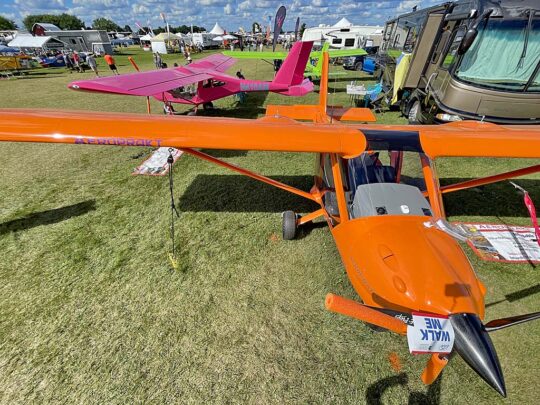 When I visited this company many years ago, they were new in western markets. Fortunately for them, a wealthy Saudi Arab businessman and flying enthusiast helped bankroll the new company.
On my visit, I saw an active operation with workers buzzing to build aircraft. However, they did so in a converted factory that was far from optimal. They made it work but they had ambitions for another facility.
When I visited this company many years ago, they were new in western markets. Fortunately for them, a wealthy Saudi Arab businessman and flying enthusiast helped bankroll the new company.
On my visit, I saw an active operation with workers buzzing to build aircraft. However, they did so in a converted factory that was far from optimal. They made it work but they had ambitions for another facility.
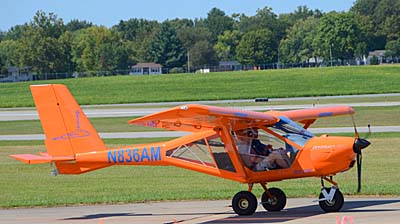
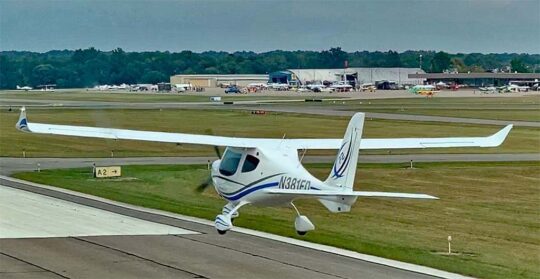
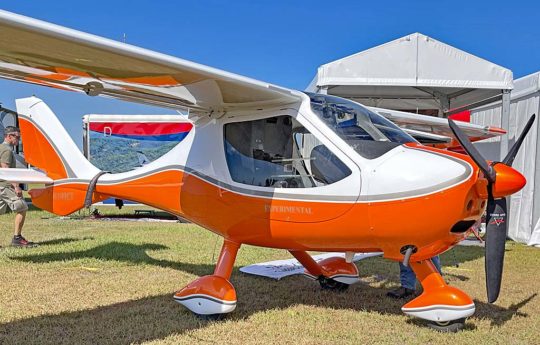

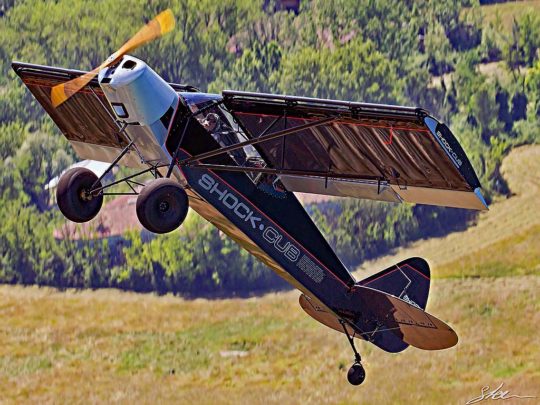 Here's the simple response: light aircraft with modern (read: powerful and efficient) engines tend to perform admirably well in high elevations, higher heat, and high humidity. If you fly almost any of these aircraft in high density conditions you already know they perform sprightly.
In contrast, I logged hundreds of Cessna 150 hours from my days as a flight instructor, and — with a similar amount of power as most LSA but also quite a few more pounds — that aircraft definitely does not perform as energetically.
So, a higher power-to-weight ratio is good, but do limits exist?
Here's the simple response: light aircraft with modern (read: powerful and efficient) engines tend to perform admirably well in high elevations, higher heat, and high humidity. If you fly almost any of these aircraft in high density conditions you already know they perform sprightly.
In contrast, I logged hundreds of Cessna 150 hours from my days as a flight instructor, and — with a similar amount of power as most LSA but also quite a few more pounds — that aircraft definitely does not perform as energetically.
So, a higher power-to-weight ratio is good, but do limits exist?
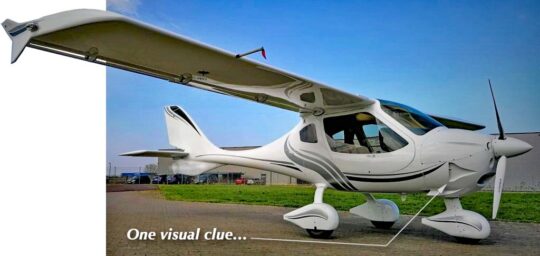
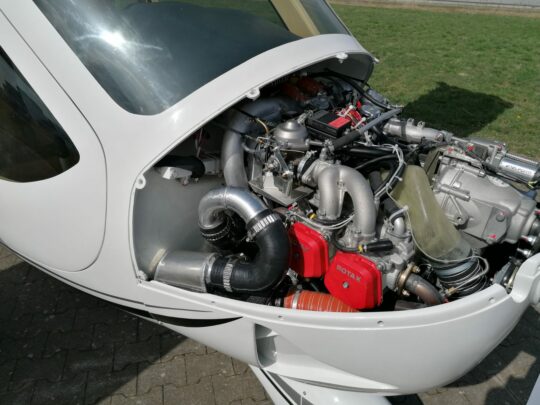 “I was very impressed with the performance of the CTLS GT with the Rotax 914 Turbo," said Flight Design test pilot Nico Stambula. "CTLS GT Turbo climbs like a rocket and easily reaches 140 knots at altitude." Stambula added that the 914 intercooled engine maintains consistent temperatures. In addition, this is a very smooth flying package."
The first CTLS GT will be shipped to an owner in South Africa, which has both high temperatures and high elevations. Flight Design believes the new model "should be just great for operating in those more challenging conditions."
With the addition of the Rotax 914T option, the long-running CTLS extends its range again. Various models are available as a European 600 kilogram (European) Ultralight, an ASTM-compliant Special LSA, or as an EASA-certified aircraft. Models are available with the Rotax 912, the 912iS and now as a turbocharged performer as the CTLS GT 914T.
“I was very impressed with the performance of the CTLS GT with the Rotax 914 Turbo," said Flight Design test pilot Nico Stambula. "CTLS GT Turbo climbs like a rocket and easily reaches 140 knots at altitude." Stambula added that the 914 intercooled engine maintains consistent temperatures. In addition, this is a very smooth flying package."
The first CTLS GT will be shipped to an owner in South Africa, which has both high temperatures and high elevations. Flight Design believes the new model "should be just great for operating in those more challenging conditions."
With the addition of the Rotax 914T option, the long-running CTLS extends its range again. Various models are available as a European 600 kilogram (European) Ultralight, an ASTM-compliant Special LSA, or as an EASA-certified aircraft. Models are available with the Rotax 912, the 912iS and now as a turbocharged performer as the CTLS GT 914T.
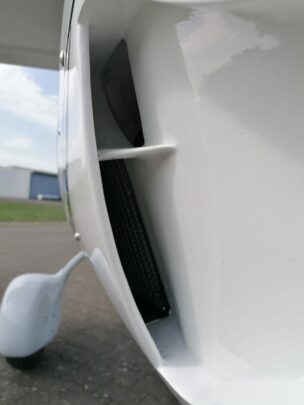 Someone was bound to ask why engineers didn't use the newest 141-horsepower Rotax 915 iS, so I queried the company on this question.
Since the start of Light-Sport Aircraft, Flight Design has been represented in America by Tom Peghiny, proprietor of
Someone was bound to ask why engineers didn't use the newest 141-horsepower Rotax 915 iS, so I queried the company on this question.
Since the start of Light-Sport Aircraft, Flight Design has been represented in America by Tom Peghiny, proprietor of 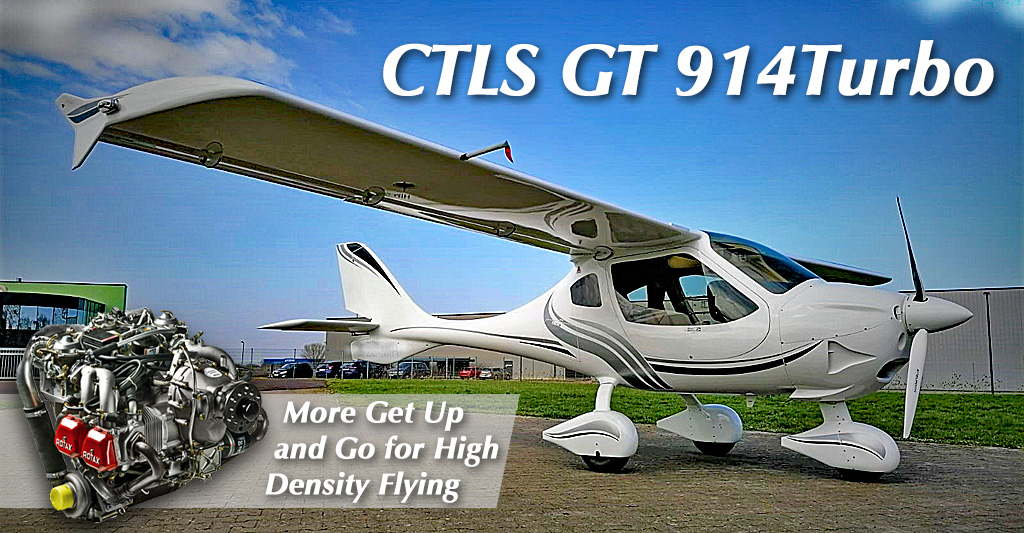
 Meanwhile, I have been producing more content here on ByDanJohnson.com so everyone sheltering-in-place can at least fantasy fly their favorite flying machine. I will also continue with the "Virtual
Meanwhile, I have been producing more content here on ByDanJohnson.com so everyone sheltering-in-place can at least fantasy fly their favorite flying machine. I will also continue with the "Virtual 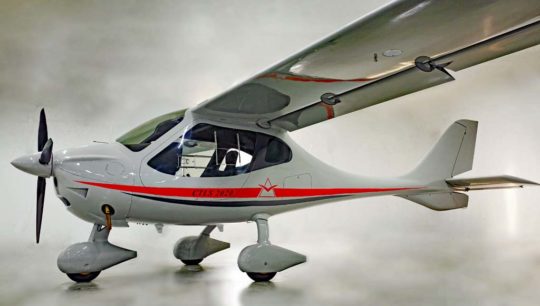 Changes for 2020 include a reshaped and longer cowling, Blackline propeller with new spinner, fully integrated landing light, and an additional NACA inlet to improve cooling. Other aerodynamic improvements include new landing gear legs with internal brake lines and new low drag wheel fairings. This all leads to significantly reduced drag and an increase in maximum speed. The company reports, "[These] aerodynamic modifications have made the CTLS 2020 nearly 10 knots faster!"
Changes for 2020 include a reshaped and longer cowling, Blackline propeller with new spinner, fully integrated landing light, and an additional NACA inlet to improve cooling. Other aerodynamic improvements include new landing gear legs with internal brake lines and new low drag wheel fairings. This all leads to significantly reduced drag and an increase in maximum speed. The company reports, "[These] aerodynamic modifications have made the CTLS 2020 nearly 10 knots faster!"
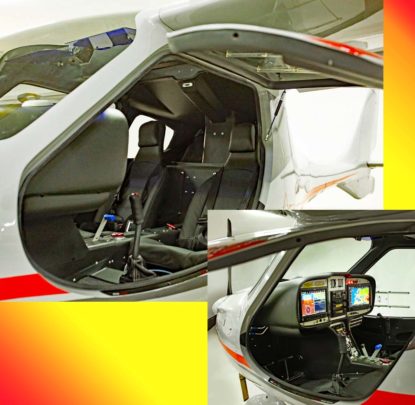 A new
A new 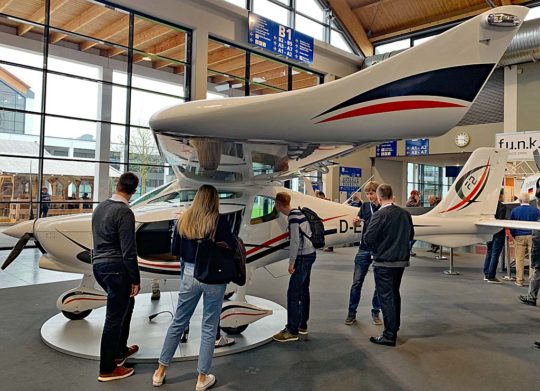 "Our F2 Light-Sport Aircraft model is fully ASTM-compliant after fine tuning," noted the company. "Our first airplanes will be delivered to customers in June 2020. Careful engineering allowed us to bring this complex airplane under the maximum allowed take-off weight (of 1,320 pounds or 600 kilograms)."
For European consumption, Flight Design is pursuing CS-23 approval (similar to FAA's Part 23) for their two seat F2, however, this model will be able to fly at 650 kilograms (1,430 pounds) of maximum takeoff weight when it is granted a CS-23 certificate. "We think this will be ideal for modern flight schools and private pilots," the company stated.
Construction of Flight Design's newest uses a new composite supplier, Hexcel.
"Our F2 Light-Sport Aircraft model is fully ASTM-compliant after fine tuning," noted the company. "Our first airplanes will be delivered to customers in June 2020. Careful engineering allowed us to bring this complex airplane under the maximum allowed take-off weight (of 1,320 pounds or 600 kilograms)."
For European consumption, Flight Design is pursuing CS-23 approval (similar to FAA's Part 23) for their two seat F2, however, this model will be able to fly at 650 kilograms (1,430 pounds) of maximum takeoff weight when it is granted a CS-23 certificate. "We think this will be ideal for modern flight schools and private pilots," the company stated.
Construction of Flight Design's newest uses a new composite supplier, Hexcel.
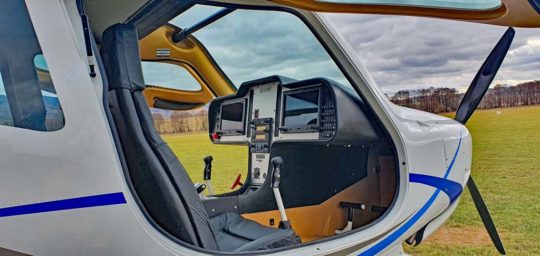 Late in 2017, a Flight Design review concluded that prepregs could deliver a more consistent final product by ensuring constant material quality and processing parameters and could produce a lighter and stronger aircraft at a more competitive overall cost. The low-temperature cure could be done outside an autoclave. The latter reduces tooling costs and can boost build rates. Following careful analysis, the company went with Hexcel. Prepreg materials — "pre-impregnated" composite fibers have an epoxy material already present — were first used for the F2 prototype.
Late in 2017, a Flight Design review concluded that prepregs could deliver a more consistent final product by ensuring constant material quality and processing parameters and could produce a lighter and stronger aircraft at a more competitive overall cost. The low-temperature cure could be done outside an autoclave. The latter reduces tooling costs and can boost build rates. Following careful analysis, the company went with Hexcel. Prepreg materials — "pre-impregnated" composite fibers have an epoxy material already present — were first used for the F2 prototype.
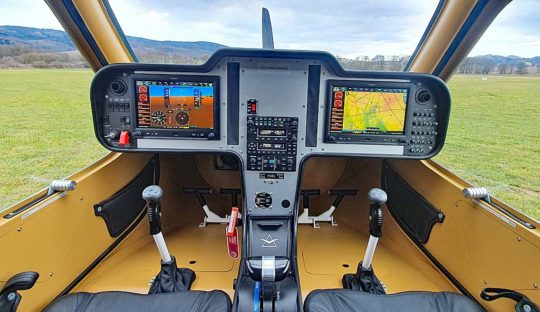 Flight Design began to review the market for available material options with a key part of its strategy to find and qualify a prepreg system that is not traditionally used in higher cost autoclave production for aerospace applications.
Flight Design began to review the market for available material options with a key part of its strategy to find and qualify a prepreg system that is not traditionally used in higher cost autoclave production for aerospace applications.
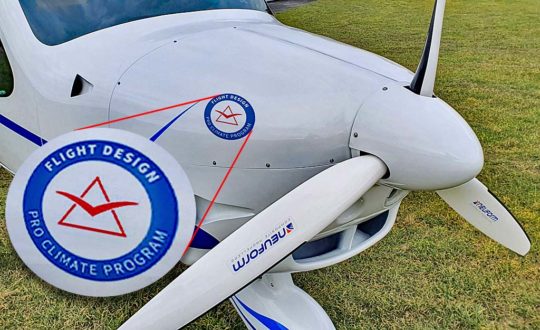 Already in operation since March 1st, Flight Design will "offset" the carbon emissions from the fuel burned by their airplanes during the first 2,000 hours of operation. They'll do this by employing the
Already in operation since March 1st, Flight Design will "offset" the carbon emissions from the fuel burned by their airplanes during the first 2,000 hours of operation. They'll do this by employing the 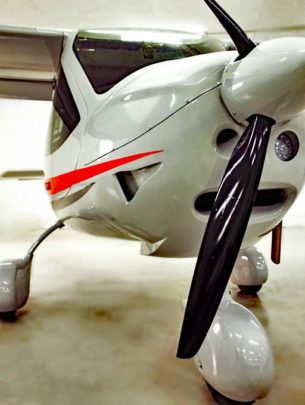 Offsets will come from cash contributions by Flight Design to programs that meet internationally-accepted standards. Funds will be deployed to planting more trees and other actions that consume CO2.
Offsets will come from cash contributions by Flight Design to programs that meet internationally-accepted standards. Funds will be deployed to planting more trees and other actions that consume CO2.
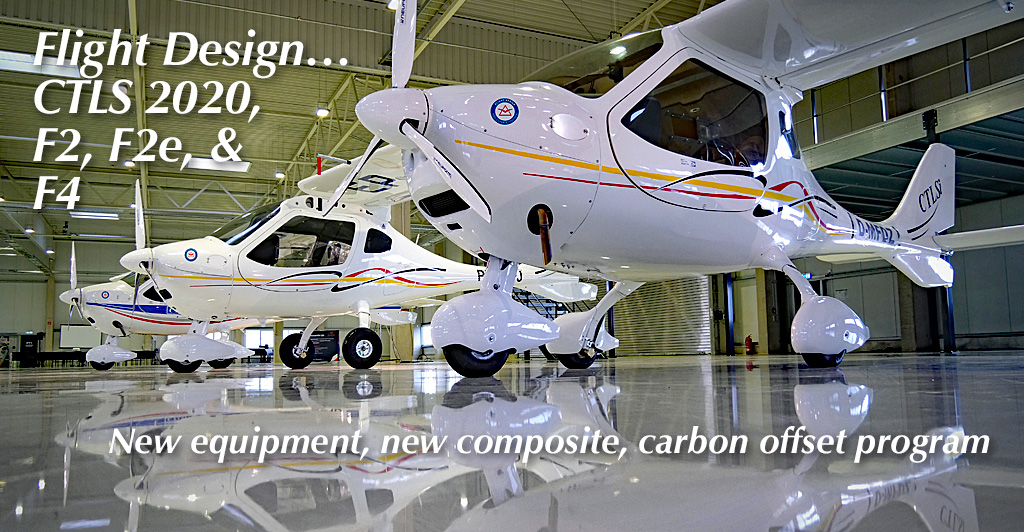
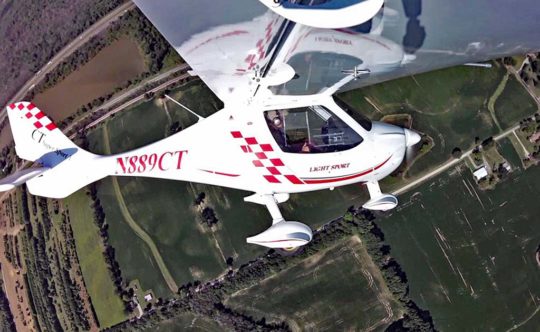 How does one LSA brand rise and stay above others?
How does one LSA brand rise and stay above others?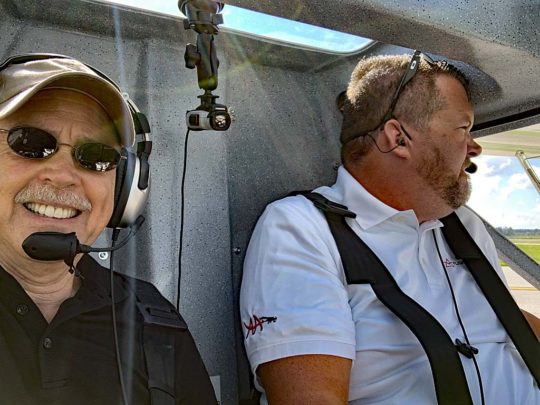 My tongue-in-cheek subtitle comes from the perspective of an average-sized pilot talking to the father and son team of Tom Sr. and Tom Jr. Gutmann. These gentle giants stand so tall above me that even Tom Cruise's acting box would not let me look this pair eye-to-eye.
Indeed, it is a tribute to the spaciousness of CT-series interiors that both these beefy fellows fit inside comfortably. Don't try that in a Cessna 150 (or even a 172)!
Flight Design's CT-series is roomy inside, 49 inches wide, a full 10 inches more than a Cessna 172. It also has super visibility. These facts are true of both CTLS, the current flagship of the German producer, and for the newest CT Super Sport, as seen in most of the nearby photos. The image of the two of us in the cockpit clearly shows that Tom Jr. and I have several inches between our shoulders and we were not smashed up against the door to produce this view.
My tongue-in-cheek subtitle comes from the perspective of an average-sized pilot talking to the father and son team of Tom Sr. and Tom Jr. Gutmann. These gentle giants stand so tall above me that even Tom Cruise's acting box would not let me look this pair eye-to-eye.
Indeed, it is a tribute to the spaciousness of CT-series interiors that both these beefy fellows fit inside comfortably. Don't try that in a Cessna 150 (or even a 172)!
Flight Design's CT-series is roomy inside, 49 inches wide, a full 10 inches more than a Cessna 172. It also has super visibility. These facts are true of both CTLS, the current flagship of the German producer, and for the newest CT Super Sport, as seen in most of the nearby photos. The image of the two of us in the cockpit clearly shows that Tom Jr. and I have several inches between our shoulders and we were not smashed up against the door to produce this view.
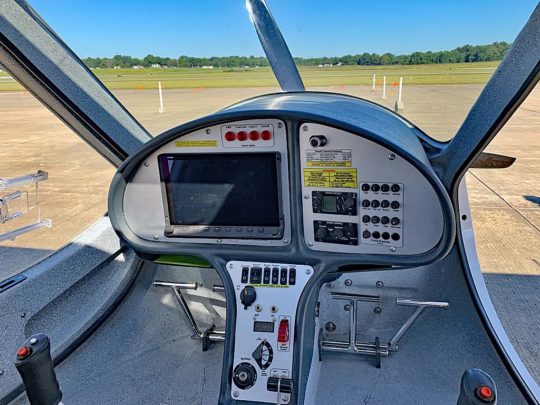 Tom and I flew Super Sport at the
Tom and I flew Super Sport at the 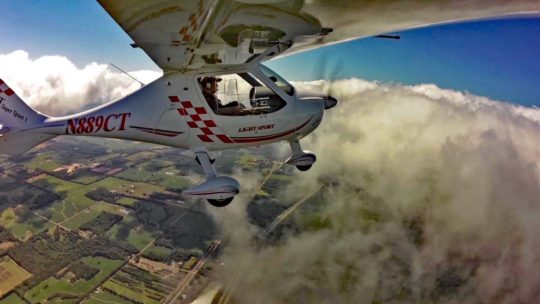 What you don't get with CT Super Sport is the back window and hat rack cabin space of CTLS. The slight enlargement of the longer, fancier LS does indeed make the cabin feel roomier and you have less space for things you need in the cockpit — though the floor compartments in front of both seats will suffice for most things you may want to access during flight. Both models keep the ample storage area aft of the cabin but you cannot access that while flying.
For this review, Super Sport was equipped with the
What you don't get with CT Super Sport is the back window and hat rack cabin space of CTLS. The slight enlargement of the longer, fancier LS does indeed make the cabin feel roomier and you have less space for things you need in the cockpit — though the floor compartments in front of both seats will suffice for most things you may want to access during flight. Both models keep the ample storage area aft of the cabin but you cannot access that while flying.
For this review, Super Sport was equipped with the 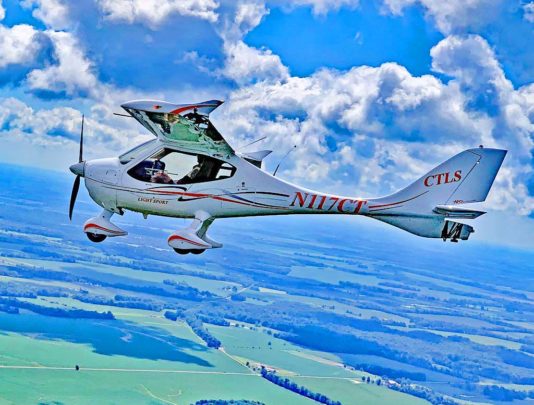 Coordinating closely with
Coordinating closely with 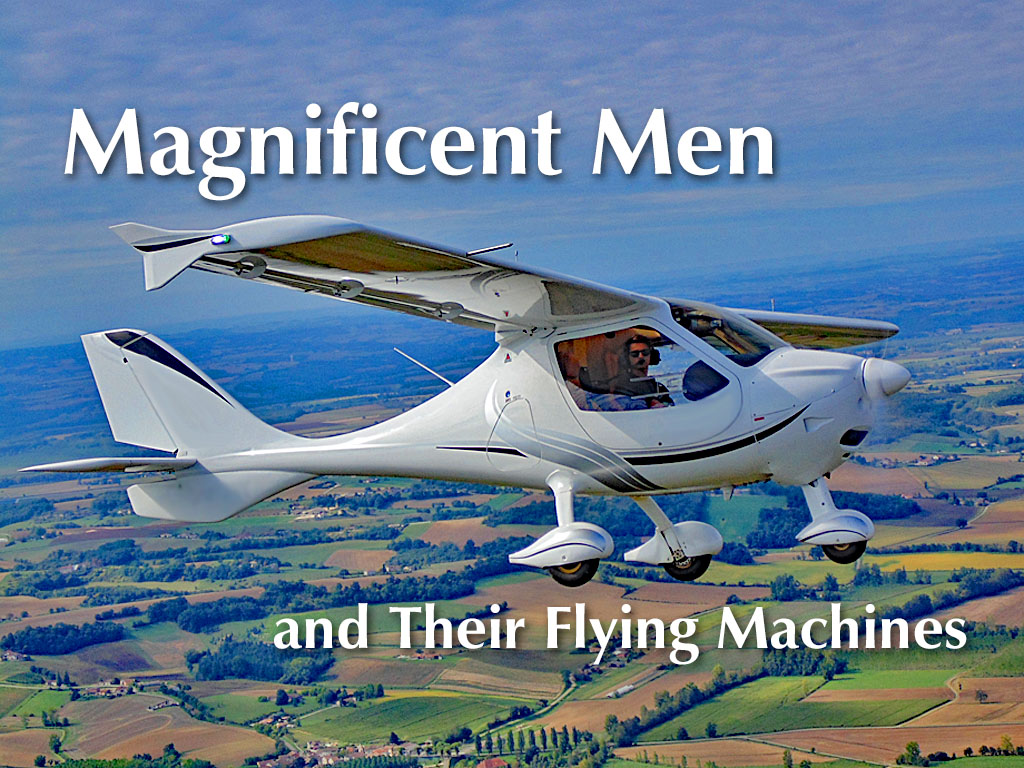
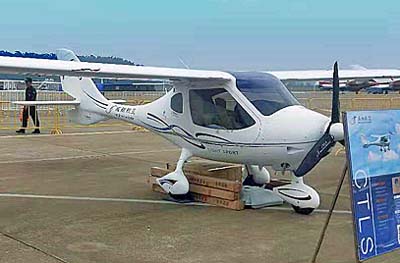 At a major show in China called Zhuhai visitors saw something: a new 6-axis LSA flight simulator. The developer is
At a major show in China called Zhuhai visitors saw something: a new 6-axis LSA flight simulator. The developer is 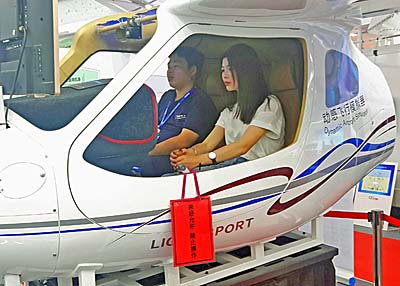 Chinese citizens play games, including flight simulators, as much as (or perhaps even more than) Americans do. Sitting at their computer or using a mobile smartphone or tablet is commonplace.
They know this activity and it may provide a bridge to people going aloft in an actual airplane like CTLS.
Imagine if you had never, ever seen a small plane of any kind. Would you rush to fly it? It's hard for Americans to envision this situation as we have small airplanes everywhere and airports in nearly every town in the nation.
AeroJones may truly be on to something developing their full-motion simulator.
“At the Zhuhai Airshow 2018, our AeroJones 6-axis of motion CTLS simulator was shown for the first time to the public,” said Michael Chou, who handles marketing for the company. He reported that reception to the new simulator was very enthusiastic.
Chinese citizens play games, including flight simulators, as much as (or perhaps even more than) Americans do. Sitting at their computer or using a mobile smartphone or tablet is commonplace.
They know this activity and it may provide a bridge to people going aloft in an actual airplane like CTLS.
Imagine if you had never, ever seen a small plane of any kind. Would you rush to fly it? It's hard for Americans to envision this situation as we have small airplanes everywhere and airports in nearly every town in the nation.
AeroJones may truly be on to something developing their full-motion simulator.
“At the Zhuhai Airshow 2018, our AeroJones 6-axis of motion CTLS simulator was shown for the first time to the public,” said Michael Chou, who handles marketing for the company. He reported that reception to the new simulator was very enthusiastic.
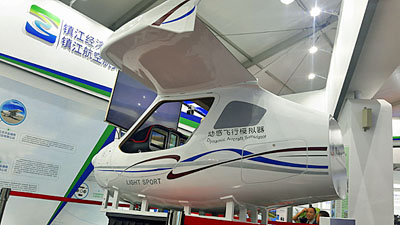
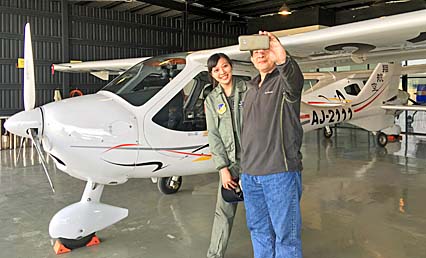 AeroJones is deep into planning for their new aircraft factory in Zhenjiang, China — where, presumably, they will also build the simulator. With the new facility, all manufacturing steps will be easier, less costly, and much more efficient, which will contribute to better values for customers buying the CTLS. Flight schools or other buyers of the modern and sophisticated CTLS will be able to fly to Dalu General Airport to see the factory and take demonstrations flights to confirm their purchase.
At the time the new factory was announced, Mr. Jones Chen said, “We are very pleased about the relationship with leaders of Zhenjiang. We look forward to a long and prosperous relationship."
AeroJones is deep into planning for their new aircraft factory in Zhenjiang, China — where, presumably, they will also build the simulator. With the new facility, all manufacturing steps will be easier, less costly, and much more efficient, which will contribute to better values for customers buying the CTLS. Flight schools or other buyers of the modern and sophisticated CTLS will be able to fly to Dalu General Airport to see the factory and take demonstrations flights to confirm their purchase.
At the time the new factory was announced, Mr. Jones Chen said, “We are very pleased about the relationship with leaders of Zhenjiang. We look forward to a long and prosperous relationship."

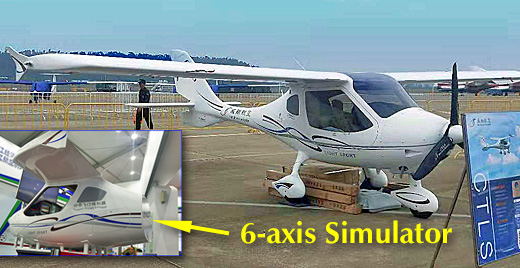
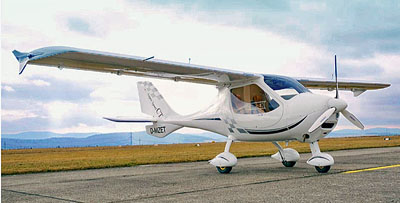 "This variation will now be reintroduced to the Americas," reported Tom Peghiny, President of
"This variation will now be reintroduced to the Americas," reported Tom Peghiny, President of 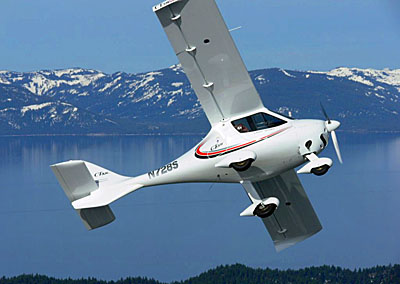
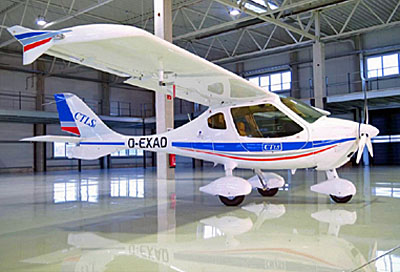 “The approval allows the company to deliver certified aircraft for delivery in Europe and the rest of the world,” said Joerges.
“This is good news for owners of CTLS-ELA aircraft currently operating under EASA’s Permit-to-Fly and for new customers looking for an advanced EASA certified light aircraft,” explained Flight Design general aviation COO, Daniel Guenther. “We can now offer owners of CTLS-ELA aircraft operating across Europe to bring their planes back to Flight Design for upgrading and conformity confirmation to allow them to have a permanent Restricted Flight Certificate (RTC).” Planning for the upgrade program is in the final stages and customers will be informed about the details in February 2019.
Flight Design observed that the company’s CT-series aircraft have been sold around the world since 2008 as Special Light-Sport Aircraft. "CTLSi-ELA brings a well proven platform, the security of an all carbon fiber airframe with an aircraft emergency rescue system and the high technology of all Flight Design aircraft," officials said.
“The approval allows the company to deliver certified aircraft for delivery in Europe and the rest of the world,” said Joerges.
“This is good news for owners of CTLS-ELA aircraft currently operating under EASA’s Permit-to-Fly and for new customers looking for an advanced EASA certified light aircraft,” explained Flight Design general aviation COO, Daniel Guenther. “We can now offer owners of CTLS-ELA aircraft operating across Europe to bring their planes back to Flight Design for upgrading and conformity confirmation to allow them to have a permanent Restricted Flight Certificate (RTC).” Planning for the upgrade program is in the final stages and customers will be informed about the details in February 2019.
Flight Design observed that the company’s CT-series aircraft have been sold around the world since 2008 as Special Light-Sport Aircraft. "CTLSi-ELA brings a well proven platform, the security of an all carbon fiber airframe with an aircraft emergency rescue system and the high technology of all Flight Design aircraft," officials said.
 On Wednesday January 23rd, 2019 kicks off with the 15th running of Sebring. This year is also the 15th anniversary of FAA establishing the Sport Pilot / Light-Sport Aircraft sector in American aviation. This accomplishment was the "regulation heard 'round the world" in that many countries have now adapted the ASTM standards for use in their countries making exports from one country to another vastly easier than in the Part 23 certified aircraft world.
On Wednesday January 23rd, 2019 kicks off with the 15th running of Sebring. This year is also the 15th anniversary of FAA establishing the Sport Pilot / Light-Sport Aircraft sector in American aviation. This accomplishment was the "regulation heard 'round the world" in that many countries have now adapted the ASTM standards for use in their countries making exports from one country to another vastly easier than in the Part 23 certified aircraft world.
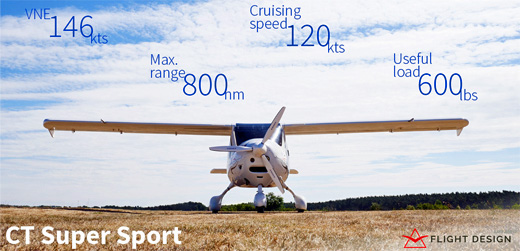
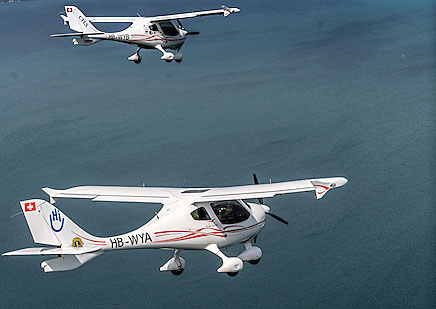 Imagine you are flying along in your well-maintained Light-Sport Aircraft with its reliable engine. You are flying a long distance over all sorts of terrain, including vast stretches of water. All is humming along and the miles or kilometers are clicking past. What an experience to fly around the world! Very, very few pilots will ever tackle such a grand challenge.
Then, the unexpected happens. Your engine quits. You have a plan. You trained for this and you are experienced. You leap into action.
Imagine that you find an acceptable landing area but the location is very remote. That seems rather likely when flying all the way around the planet.
Touchdown goes OK. The airplane is undamaged. You are fine. However, you cannot raise anyone on the radio and you are not sure your airborne mayday call was heard. You might trigger the ELT or other satellite device you brought but rescue means staying with the aircraft. Depending on the situation, that might not be optimal.
Now… imagine all this if your means of moving around is by wheelchair. This adds a huge extra dimension of difficulty, even for a determined and fiercely independent person. What once was a daring aviation adventure could now become a battle on the ground.
Imagine you are flying along in your well-maintained Light-Sport Aircraft with its reliable engine. You are flying a long distance over all sorts of terrain, including vast stretches of water. All is humming along and the miles or kilometers are clicking past. What an experience to fly around the world! Very, very few pilots will ever tackle such a grand challenge.
Then, the unexpected happens. Your engine quits. You have a plan. You trained for this and you are experienced. You leap into action.
Imagine that you find an acceptable landing area but the location is very remote. That seems rather likely when flying all the way around the planet.
Touchdown goes OK. The airplane is undamaged. You are fine. However, you cannot raise anyone on the radio and you are not sure your airborne mayday call was heard. You might trigger the ELT or other satellite device you brought but rescue means staying with the aircraft. Depending on the situation, that might not be optimal.
Now… imagine all this if your means of moving around is by wheelchair. This adds a huge extra dimension of difficulty, even for a determined and fiercely independent person. What once was a daring aviation adventure could now become a battle on the ground.
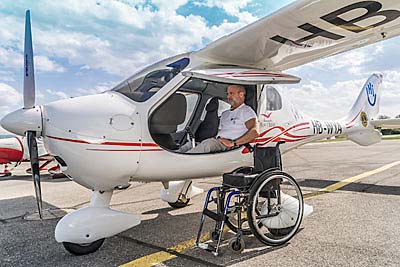 Handiflight's goal is both simple and enormous at once: "A challenging and inspiring global adventure promoting the inclusion of disabled people and values such as commitment, fraternity, and fellowship."
Handiflight 2018/2019 hopes to "contribute to changing people’s perceptions of disability and combating prejudices and exclusion" and to "turn dreams into reality, face new challenges, explore new pathways, discover new horizons by flying … across the most amazing and demanding areas of our planet. An additional goal is to "strengthen the global network of disabled aviators all around the world in collaboration with the
Handiflight's goal is both simple and enormous at once: "A challenging and inspiring global adventure promoting the inclusion of disabled people and values such as commitment, fraternity, and fellowship."
Handiflight 2018/2019 hopes to "contribute to changing people’s perceptions of disability and combating prejudices and exclusion" and to "turn dreams into reality, face new challenges, explore new pathways, discover new horizons by flying … across the most amazing and demanding areas of our planet. An additional goal is to "strengthen the global network of disabled aviators all around the world in collaboration with the 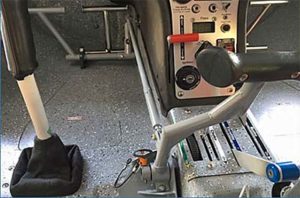
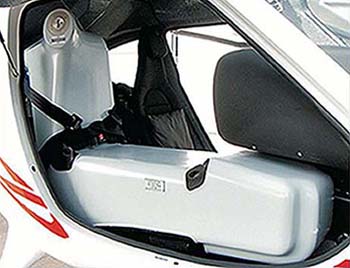
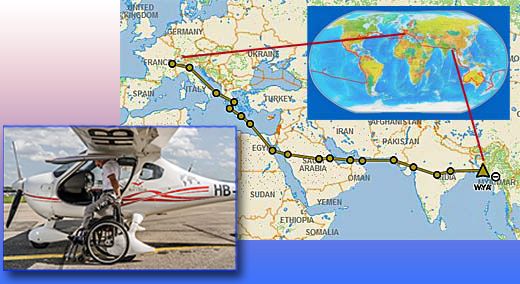
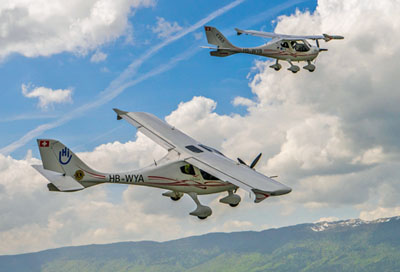
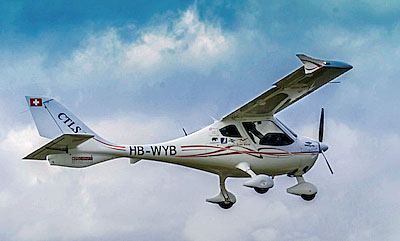 Lift
Lift Flight Design said this "is a daring adventure by physically challenged pilots to fly around the world starting very soon, on November 18, 2018. Company CEO Lars Joerges announced that the German manufacturer is a contributing sponsor to the undertaking. The flight will be conducted using a CTLS aircraft.
According to Flight Design, the globe-girdling flight will start from Geneva, Switzerland and will plan to visit 40 countries in five continents while traveling more than 49,000 miles. The flight plans to make “150 stops to meet, share, inspire and promote the inclusion of disabled people worldwide,” organizers said. The goal is to raise funds for Handicap International and is further sponsored by the Lions Clubs International, a fraternal organization that raises money for worthy causes.
Flight Design said this "is a daring adventure by physically challenged pilots to fly around the world starting very soon, on November 18, 2018. Company CEO Lars Joerges announced that the German manufacturer is a contributing sponsor to the undertaking. The flight will be conducted using a CTLS aircraft.
According to Flight Design, the globe-girdling flight will start from Geneva, Switzerland and will plan to visit 40 countries in five continents while traveling more than 49,000 miles. The flight plans to make “150 stops to meet, share, inspire and promote the inclusion of disabled people worldwide,” organizers said. The goal is to raise funds for Handicap International and is further sponsored by the Lions Clubs International, a fraternal organization that raises money for worthy causes.
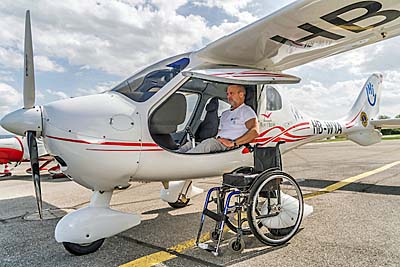 Handiflight is a non-profit association formed in Gruyère, Switzerland in 2007. The organization hosts what they call the biggest fly-in for disabled pilots from all around the world.
After 10 years of successful events, Handiflight is now tackling a new goal: “To fly around the world to explore new horizons, look for new challenges, combat prejudices and promote the inclusion of disabled people.”
“We met with Daniel Ramsier, one of the organizers of the Handiflight,” said Joerges. "We were very inspired by his vision and wanted to be part of this adventure.” Primary pilots Paolo Pocobelli, Guillaume Féral and Mike Lomberg will lead an international team of more than 15 pilots with physical disabilities.
Handiflight is a non-profit association formed in Gruyère, Switzerland in 2007. The organization hosts what they call the biggest fly-in for disabled pilots from all around the world.
After 10 years of successful events, Handiflight is now tackling a new goal: “To fly around the world to explore new horizons, look for new challenges, combat prejudices and promote the inclusion of disabled people.”
“We met with Daniel Ramsier, one of the organizers of the Handiflight,” said Joerges. "We were very inspired by his vision and wanted to be part of this adventure.” Primary pilots Paolo Pocobelli, Guillaume Féral and Mike Lomberg will lead an international team of more than 15 pilots with physical disabilities.
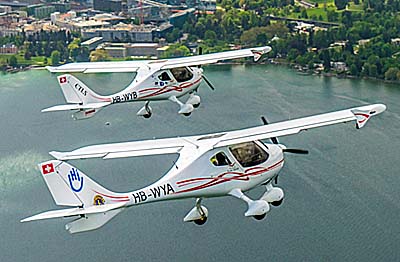 Upon the completion of this flight it will mark the third flight around the world for a CT-series aircraft. The first time occurred in 2007 by two pilots from India to celebrate the Silver Jubilee of the Indian Air Force. The second round-the-world flight was Azimuth 270, a flight by Yannick Bovier and Francisco Agullo, two Swiss Airbus pilots who flew a westward flight around the equator of the Earth in 2010. Soon will begin this great and inspiring flight by Handiflight!
Upon the completion of this flight it will mark the third flight around the world for a CT-series aircraft. The first time occurred in 2007 by two pilots from India to celebrate the Silver Jubilee of the Indian Air Force. The second round-the-world flight was Azimuth 270, a flight by Yannick Bovier and Francisco Agullo, two Swiss Airbus pilots who flew a westward flight around the equator of the Earth in 2010. Soon will begin this great and inspiring flight by Handiflight!
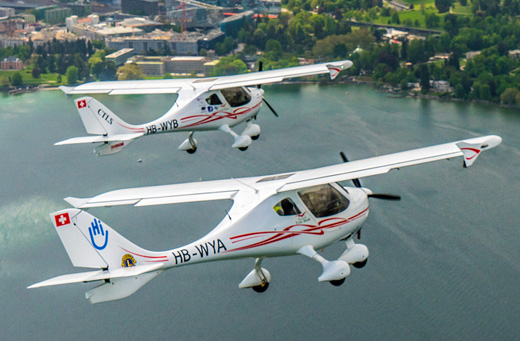

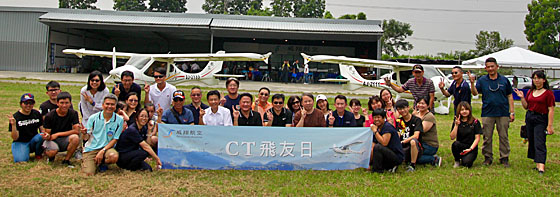 Let me tell you about a specific brand fly-in, for the CTLS produced in China. While small compared to big American events, this was a healthy start. If aviation is to grow in Asia-Pacific, I think events like that hosted by manufacturer AeroJones are key. More of them is needed but here is a worthy start.
In May 2018, AeroJones Aviation hosted a first-time event at their training facility in the south of Taiwan, called Pingtong Saijiain Airport. AeroJones Aviation is the manufacturer of the sophisticated light aircraft called CTLS. The aircraft factory is located in Xiamen, China.
Let me tell you about a specific brand fly-in, for the CTLS produced in China. While small compared to big American events, this was a healthy start. If aviation is to grow in Asia-Pacific, I think events like that hosted by manufacturer AeroJones are key. More of them is needed but here is a worthy start.
In May 2018, AeroJones Aviation hosted a first-time event at their training facility in the south of Taiwan, called Pingtong Saijiain Airport. AeroJones Aviation is the manufacturer of the sophisticated light aircraft called CTLS. The aircraft factory is located in Xiamen, China.
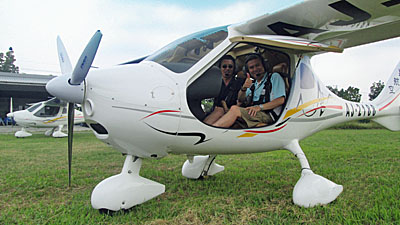 “As promised,
“As promised, 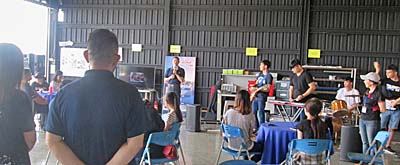 Events like the one AeroJones hosted may be critically important to introduce literally billions of people in the Asian-Pacific region to the idea of flying for fun.
“We were pleased with this first event and the number of people who came to help launch this new idea,” observed Mr. Hsieh Chi-Tai, General Aviation Development Vice President for AeroJones. “Even CT owners that could not fly their aircraft to Pingtong still showed their enthusiasm of flying.” He believes this type of activity will grow as AeroJones Aviation is able to replicate their flight school and pilots club across China in the years ahead.
AeroJones acquired the rights to manufacture the German CTLS aircraft design. The company has since secured approval from the government to build and sell these LSA. China is predicted to become a major market for Light-Sport Aircraft.
Events like the one AeroJones hosted may be critically important to introduce literally billions of people in the Asian-Pacific region to the idea of flying for fun.
“We were pleased with this first event and the number of people who came to help launch this new idea,” observed Mr. Hsieh Chi-Tai, General Aviation Development Vice President for AeroJones. “Even CT owners that could not fly their aircraft to Pingtong still showed their enthusiasm of flying.” He believes this type of activity will grow as AeroJones Aviation is able to replicate their flight school and pilots club across China in the years ahead.
AeroJones acquired the rights to manufacture the German CTLS aircraft design. The company has since secured approval from the government to build and sell these LSA. China is predicted to become a major market for Light-Sport Aircraft.
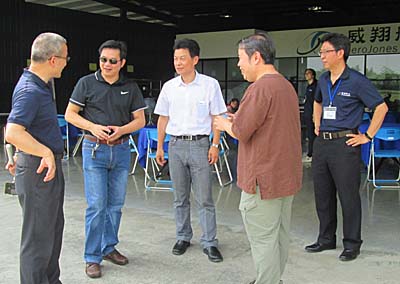 In addition to China and Taiwan, AeroJones Aviation is able to ship fully manufactured CTLS aircraft to other Asia-Pacific countries including Australia, New Zealand, Indonesia, Malaysia, Philippines, Japan, Korea, and Thailand.
Many aviation experts believe China could see rapid growth for aircraft of this type given plans from the central government in China to build hundreds of new airports during the next few years. The Air Sports Federation of China is also planning hundreds of "flying camps" where citizens can learn more about and experience aviation. ASFC personnel attended Oshkosh 2018 and met with groups to learn more about how to pursue their plans.
The Xiamen, China base of AeroJones Aviation includes a manufacturing facility with full fabrication capability. More than 50 highly-trained workers build nearly every part of the airplane in Xiamen. As China may nurture entry level aviation, AeroJones appears destined to be apart of it.
In addition to China and Taiwan, AeroJones Aviation is able to ship fully manufactured CTLS aircraft to other Asia-Pacific countries including Australia, New Zealand, Indonesia, Malaysia, Philippines, Japan, Korea, and Thailand.
Many aviation experts believe China could see rapid growth for aircraft of this type given plans from the central government in China to build hundreds of new airports during the next few years. The Air Sports Federation of China is also planning hundreds of "flying camps" where citizens can learn more about and experience aviation. ASFC personnel attended Oshkosh 2018 and met with groups to learn more about how to pursue their plans.
The Xiamen, China base of AeroJones Aviation includes a manufacturing facility with full fabrication capability. More than 50 highly-trained workers build nearly every part of the airplane in Xiamen. As China may nurture entry level aviation, AeroJones appears destined to be apart of it.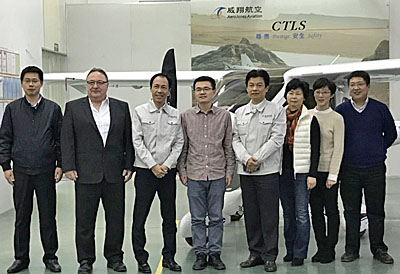
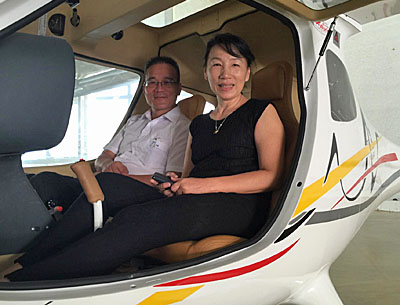
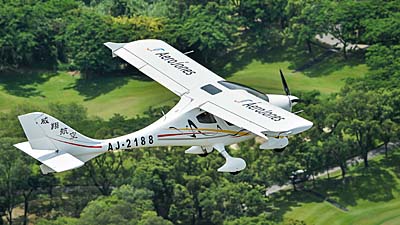 In addition to China, AeroJones Aviation is able to ship fully manufactured aircraft to other Asia-Pacific countries that accept ASTM standards for approvals, including Australia, New Zealand, Indonesia, Malaysia, Philippines, Japan, Korea, Thailand, plus additional countries in the region.
The German developer — since renamed Flight Design general aviation — will supply all other nations as AeroJones Aviation serves the Asia-Pacific market. In the United States, the German producer has been represented by
In addition to China, AeroJones Aviation is able to ship fully manufactured aircraft to other Asia-Pacific countries that accept ASTM standards for approvals, including Australia, New Zealand, Indonesia, Malaysia, Philippines, Japan, Korea, Thailand, plus additional countries in the region.
The German developer — since renamed Flight Design general aviation — will supply all other nations as AeroJones Aviation serves the Asia-Pacific market. In the United States, the German producer has been represented by 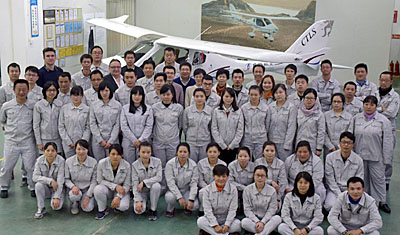

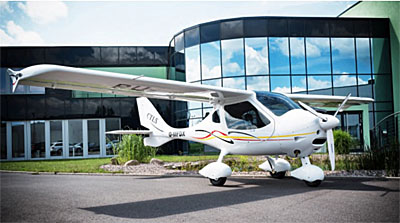
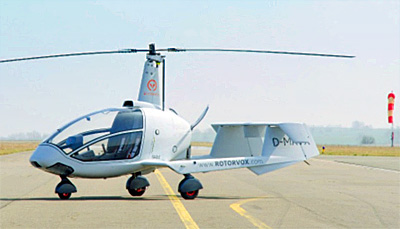
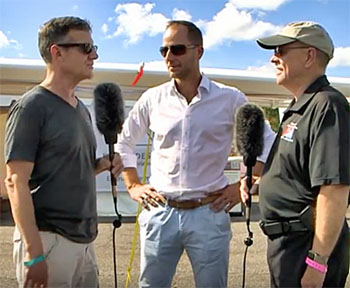
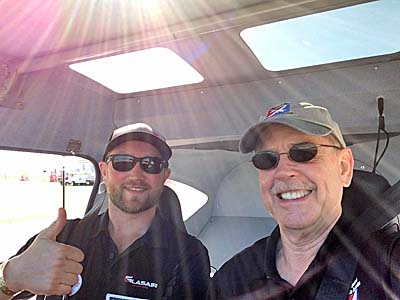
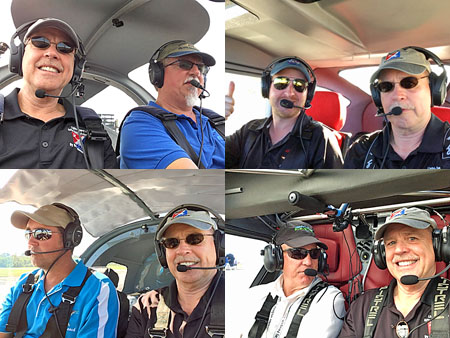
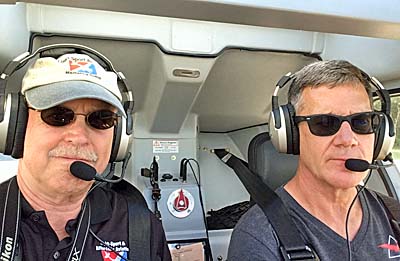
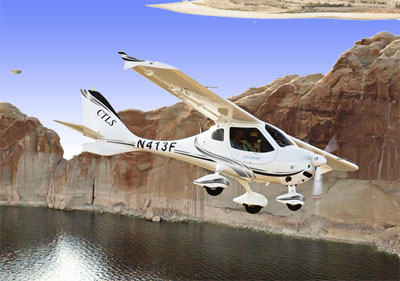 After more than a year, a resolution was reached for the airplane that topped the charts in the LSA space since Day One. Although Flight Design's CT-series was
After more than a year, a resolution was reached for the airplane that topped the charts in the LSA space since Day One. Although Flight Design's CT-series was 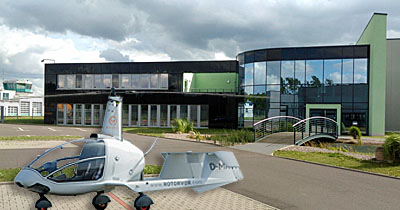 Tom explained, "The new company will be known as Flight Design General Aviation, GmbH. After concluding the sale of all major company assets to the Lift Holding investment group, Flight Design General Aviation will be based at a new and modern facility (photo) near the historic town of Eisenach in the Thuringia region of Germany.
Tom explained, "The new company will be known as Flight Design General Aviation, GmbH. After concluding the sale of all major company assets to the Lift Holding investment group, Flight Design General Aviation will be based at a new and modern facility (photo) near the historic town of Eisenach in the Thuringia region of Germany.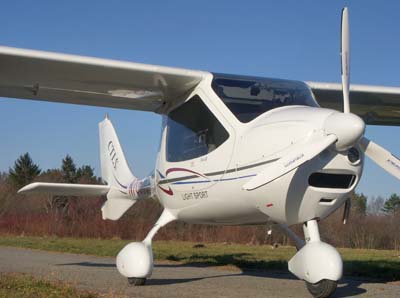 Lift is also the owner of the
Lift is also the owner of the 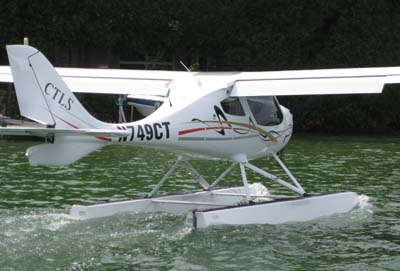 FDGA has aircraft operating in 48 countries around the globe. The company will soon employ 20 employees in Germany — mostly highly qualified engineers and technicians — as well as about 100 manufacturing employees in Ukraine. Since the founding of the company in 1988 and the establishment of the Ukrainian production plant in 1993, the company has delivered over 1,800 aircraft.
"Flight Design has some unique products and experience in the production of all carbon-composite, very efficient light aircraft. We want to invest in development of those products and also achieve leadership in customer support," said Lars Joerges, the new Managing Director of FDGA.
Flight Design General Aviation also plans to continue development of the C4 four-place aircraft, although Tom Peghiny said the program would change to accommodate the efficiencies in a changing certification landscape in the United States and abroad, referring to the long-awaited Part 23 rewrite and its mirror regulation in Europe.
Tom indicated that FDGA will make a return to AirVenture for the 2018 event.
FDGA has aircraft operating in 48 countries around the globe. The company will soon employ 20 employees in Germany — mostly highly qualified engineers and technicians — as well as about 100 manufacturing employees in Ukraine. Since the founding of the company in 1988 and the establishment of the Ukrainian production plant in 1993, the company has delivered over 1,800 aircraft.
"Flight Design has some unique products and experience in the production of all carbon-composite, very efficient light aircraft. We want to invest in development of those products and also achieve leadership in customer support," said Lars Joerges, the new Managing Director of FDGA.
Flight Design General Aviation also plans to continue development of the C4 four-place aircraft, although Tom Peghiny said the program would change to accommodate the efficiencies in a changing certification landscape in the United States and abroad, referring to the long-awaited Part 23 rewrite and its mirror regulation in Europe.
Tom indicated that FDGA will make a return to AirVenture for the 2018 event.